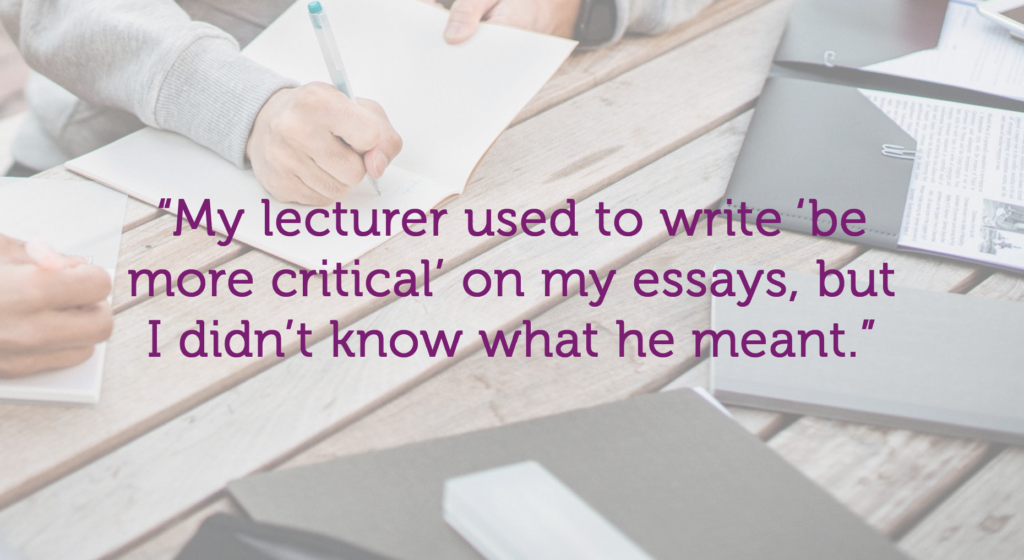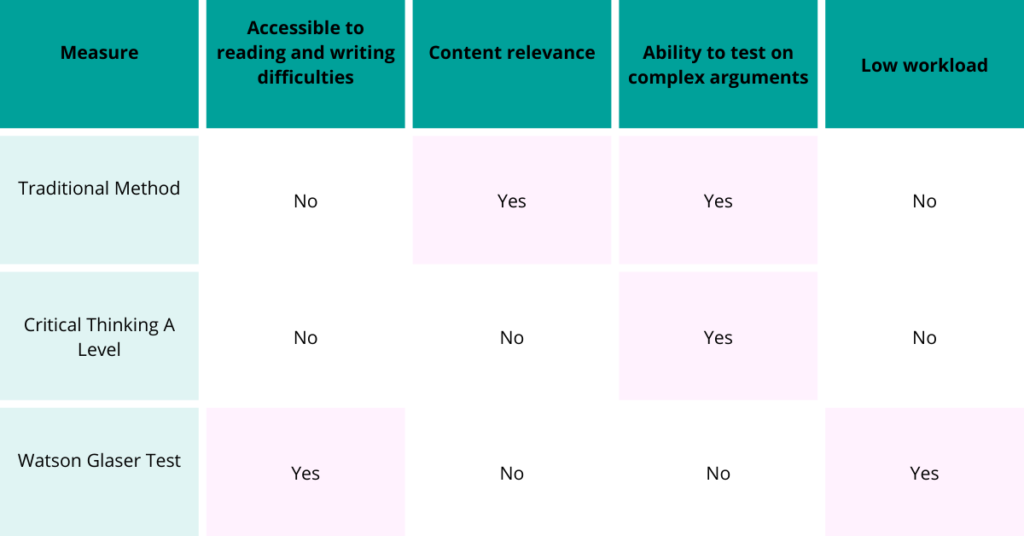11 May Measuring Critical Thinking: Can It Be Done?
Why Should we Measure Critical Thinking?
Critical Thinking is an Objective of Education
An important reason for measuring critical thinking is that it is a key part of education, whether it is explicitly mentioned within the curriculum or not. The UK’s Framework for Higher Education Qualifications (FHEQ) includes descriptors that are specific to critical thinking, including:
“Critically evaluate arguments, assumptions, abstract concepts and data (that may be incomplete), to make judgements, and to frame appropriate questions to achieve a solution – or identify a range of solutions – to a problem.”
This illustrates the importance of critical thinking for academic success in higher education.
In the USA, critical thinking is actively embedded within the curriculum at a secondary school level in the ‘Common Core’ learning objectives. Students are required to learn to make strong arguments and to be able to structure them in a way that leads smoothly to support a conclusion. Including critical thinking in the secondary curriculum is important, since experts have found that critical thinking should be taught prior to higher education in order to be effective. This makes it important to include within learning objectives and assessment criteria, as a measure of academic achievement.

Employers Look for Critical Thinking Skills
Critical thinking is also essential for professional success. As a result, it is no surprise that a number of prominent employers test critical thinking skills as part of their recruitment process. The Watson Glaser Test, discussed in our article about measuring critical thinking, has been used by the Bank of England and the Government Legal Service among other employers. Given that critical thinking has an increasing role in employability, it makes sense that critical thinking should be taught and tested among students in education.
However, critical thinking is an abstract and complex term, which makes it more difficult to measure and assess than other essential skills like reading and writing. The recognition that critical thinking is an important skill has led to the development of a number of assessment methods, although all of these methods have considerable limitations.
How is Critical Thinking Measured?
Traditional Measurement of Critical Thinking in Education
Traditionally, a student’s ability to think critically has been measured through essay-based assessment within humanities, arts and social sciences subjects. As a result, critical thinking ability is only an aspect of the assessment: students are simultaneously marked on their subject knowledge, reading and writing skills. Therefore, providing sufficient feedback about each aspect of the assessment is incredibly time intensive for teachers. With limited feedback from teachers, students may experience a cycle of writing essays and receiving negative feedback, without fully understanding why their argument is weak or how it can be improved.

This can lead to confusion and result in limited improvement in later essays as a result. For students who struggle with reading and writing, this challenge is only exacerbated. Furthermore, this method fails to produce a separate, useful measurement of critical thinking that teachers can use to identify problems and drive improvement.
Critical Thinking as an A Level Subject
The momentum for assessing critical thinking skills reached a peak in the UK with the introduction of school subjects dedicated to critical thinking. A number of exam boards included a dedicated A Level subject in the early 2000s, but only Cambridge International’s “Thinking Skills” curriculum remains. For this A Level, students are examined using a familiar exam format, with a mixture of short answer questions and essay style questions. Two papers, “critical thinking” and “applied reasoning” assess critical thinking, while the others focus on problem solving, with a greater focus on numerical questions.

Undoubtedly, students have more time to develop critical thinking skills through studying a dedicated course. However, there are problems with this approach. Despite the use of shorter questions, strong reading and writing abilities are still necessary and this heavily impacts the criteria for achieving high marks. There is also a high work load for the teacher. Additionally, choosing to teach or study this subject means choosing against more traditional or accessible subjects. But UK universities do not accept it as part of their entrance requirements as they want to see students demonstrate their critical thinking within the traditional subjects. For these reasons, critical thinking as a subject has failed to make it into the curriculum in most schools.
Critical Thinking Tests for Employment
Some critical thinking tests are designed as a way of evaluating job applicants or of testing employee skills, rather than to test structured learning of critical thinking. The Watson Glaser test is perhaps the most well-known critical thinking test of this kind and is used most commonly by law employers.
The Watson Glaser test uses short multiple choice questions, which reduces verbal load and makes marking easier. The results can be transformed easily into statistics for the quantitative measure of critical thinking among a sample group. However, this means the questions are simple, so the test does not measure proficiency in thinking critically about longer, more complex arguments. The questions are also based on scenarios that may not be familiar to exam takers. Other employment tests use a similar format, although many limit critical thinking to a small section of the test.
Summarising the Strengths and Weaknesses of Critical Thinking Tests

The table above summarises the strengths and weaknesses of each critical thinking test in this article. To learn more about measuring critical thinking, click here to read our longer article.
Look out for our next blog post, where we discuss how to improve the measurement of critical thinking.
Images from Armin Rimoldi, cottonbro and Polina Tan Kilevitch on Pexels


